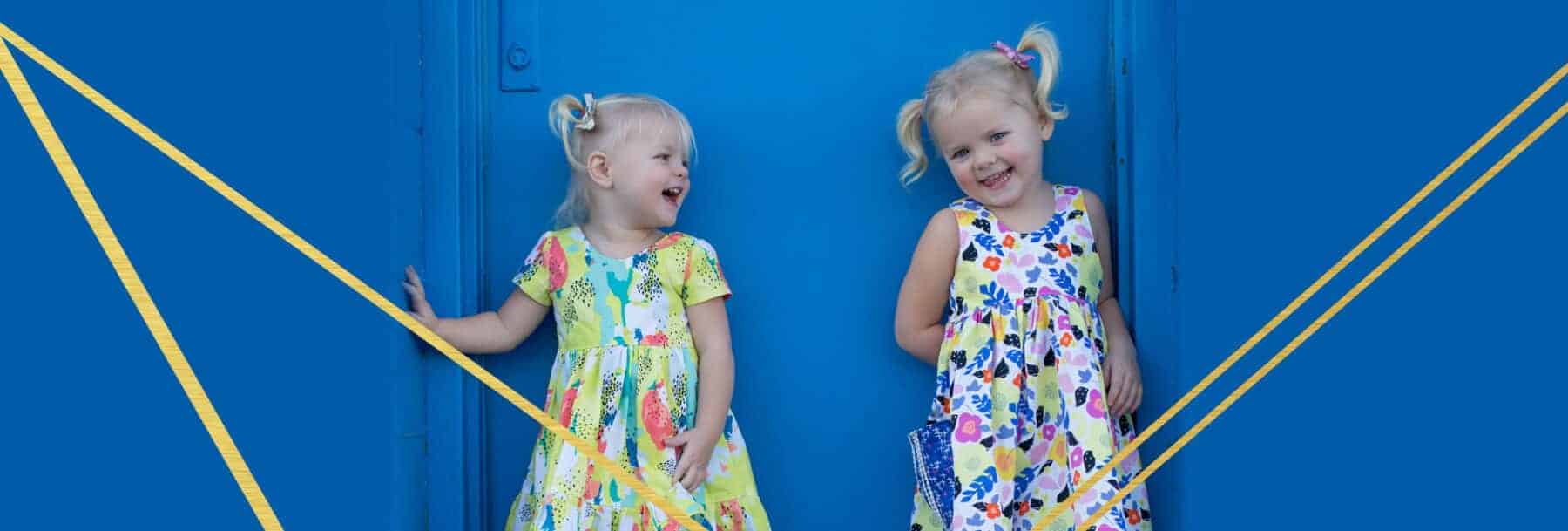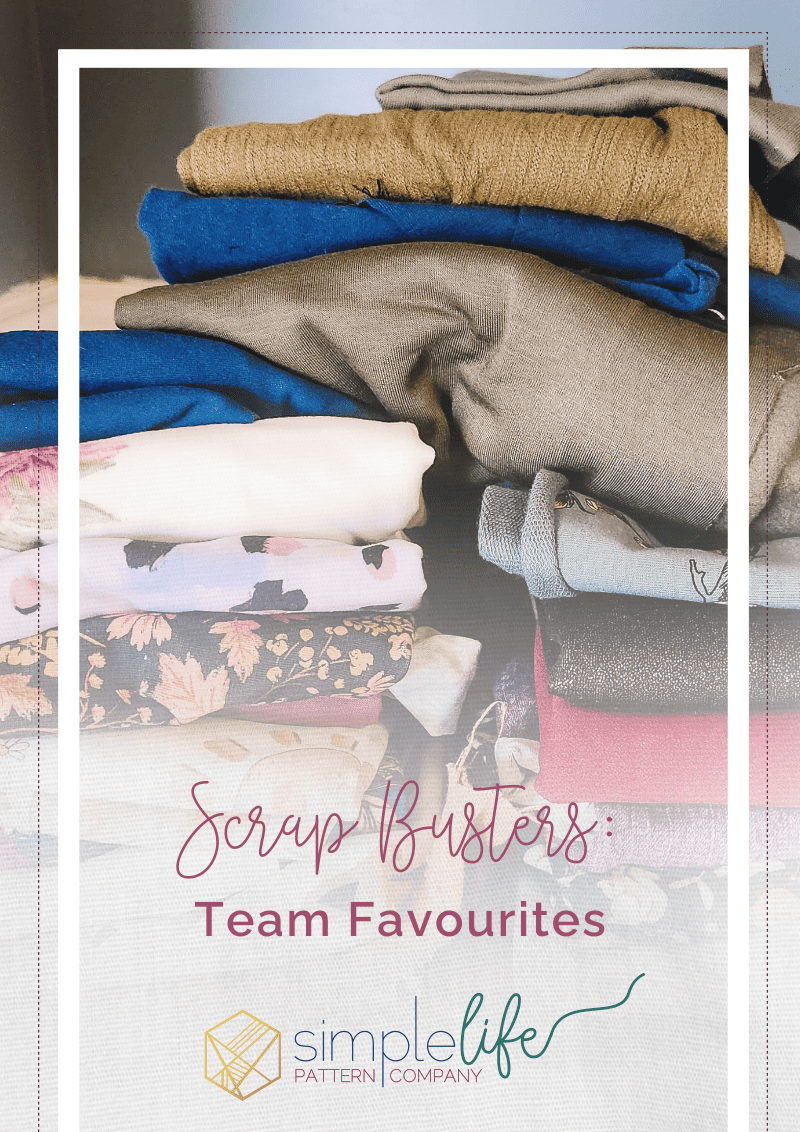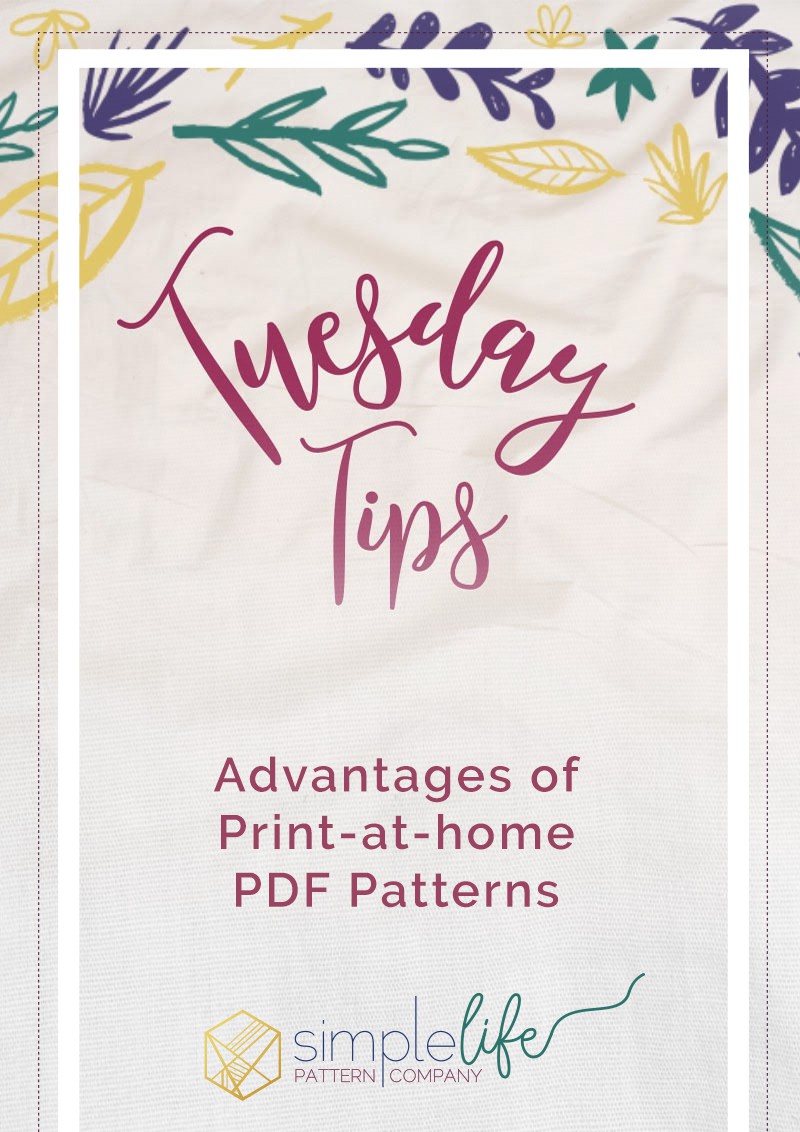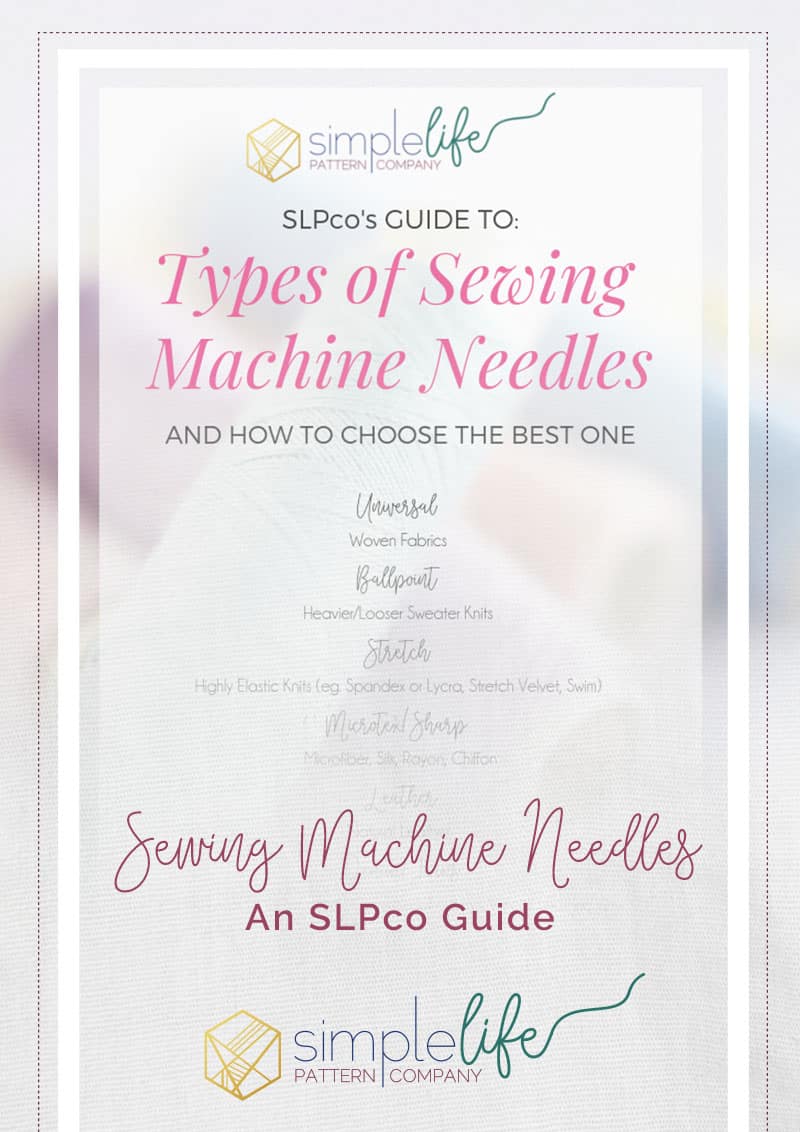
SLPco’s Guide to Sewing Machine Needles
One of the questions that we see asked most often in our Simple Life Patterns Fan Group on Facebook is, “How do I know what needle to use for this project?” Is it true that all sewing machine needles are created equal, and therefore suited for all of your different fabric bases? The answer to that last question is a big old NO. So to help you with this age old question, I have created a simple guide that you can refer to with each project.
Sewing Machine Needle Sizes
First we need to look at the different sizes that sewing machine needles come in. If I were to ask you, do you know what the numbers associated with your sewing machine needles mean, could you answer? I know a lot of people can’t, so that’s where I come in! Understanding what the numbers associated with sewing machine needles mean is crucial in choosing the correct needle for your project.
What makes these numbers the most tricky is the fact that they use both American and European labeling. American sizing using the numbers 8-19 and European sizing using 60-120. Check out this simple graphic that breaks it down for you. The higher the number, the thicker (or heavier) the needle. On the flip-side, the smaller the number, the more fine the needle will be.
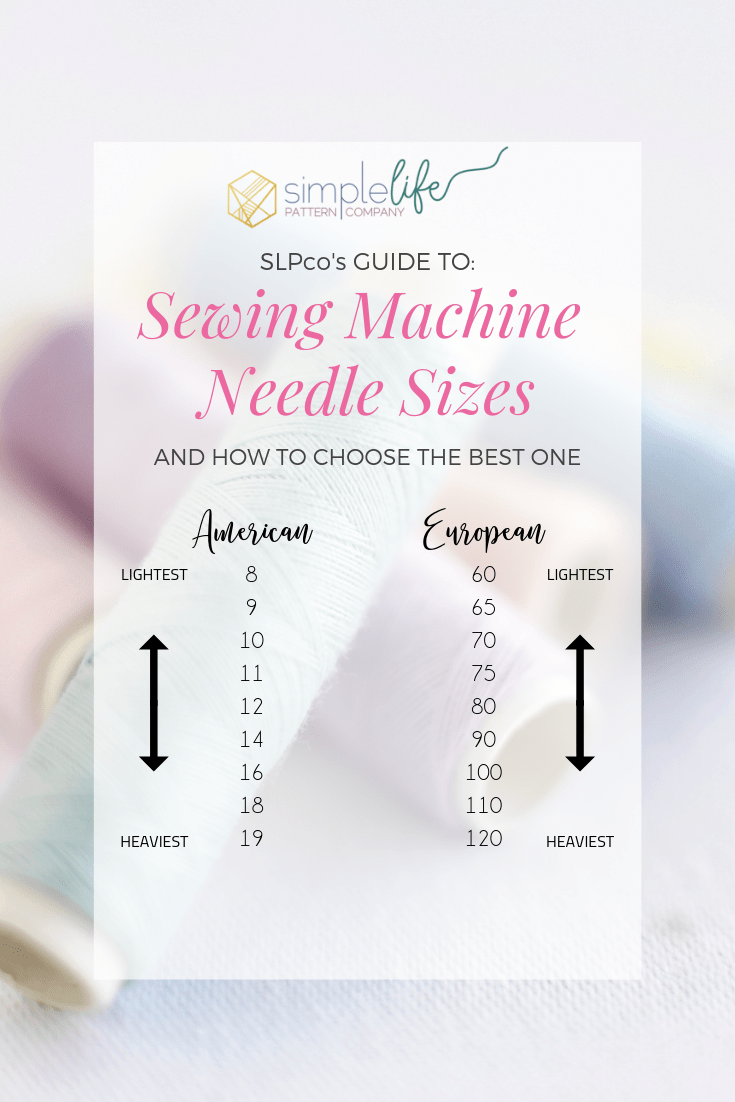
Now, what does this mean in regards to your sewing project and how do you know how thick or fine of a needle to use?
Let’s imagine you’re sewing a light breezy Cordelia’s Swimsuit Coverup using a fine sheer fabric. For this project you will want to choose a fine needle, such as a 60/8* (may also be labeled as 8/60) needle. If you were to use a heavy needle, such as a 120/19*, you would end up with holes in your fabric.
Now let’s look at heavier fabrics, such as upholstery fabric. You probably wouldn’t be using an upholstery fabric for any SLPco patterns, however, these are the types of fabrics you would want to use a heavy needle for. A 120/19* needle is strong enough to pierce through heavy upholstery fabric as well as carry a strong thread that is suited for this type of fabric. Now, what if your fabric is in the medium weight range? You may want to experiment to find the proper size by starting with a needle in the mid-range, like a 80/12*. Making sense now?
You will always want to test your thread/needle/fabric combo on scrap pieces of your fabric rather than the item you are working on to avoid any ruined projects.
*The order in which the numbers are labeled does not affect the size. (Eg. 60/8 vs. 8/60)
Types of Sewing Machine Needles

The number of sewing machine needle types can seem overwhelming at first. But, I promise, it’s not as scary as it seems. There are three simple steps to consider:
- First, match your fabric type to the needle type.
- Second, match your fabric thickness to the needle thickness.
- Third, match the thread thickness to the needle thickness.
Universal Needles
Uses: This is your safest choice for most of the woven fabrics you sew SLPco patterns with.
Ballpoint Needles
Uses: Best for heavier, looser sweater knits.
The point of a ballpoint needle is rounded instead of sharp, allowing it to push between the yarn of the fabric rather than piercing holes in it.
Stretch Needles
Uses: Best for highly elastic fabrics like Spandex or Lycra, Stretch Velvet, and Swim
The point of stretch needles are slightly less rounded than ballpoint.
Microtex and Sharp Needles
Uses: Best for Microfiber, Silk, Rayon, and Chiffon. These are commonly used in heirloom sewing.
Leather Needle
Uses: Best for sewing natural leather.
Leather needles have a slight cutting point
Denim or Jeans Needle
Uses: Best for heavyweight denim, duck, canvas, upholstery fabrics, artificial leather, and vinyl.
Denim, or jeans, needles are designed specially so that they can pierce through the fabric without pushing it down into the needle plate hole. If you end up with skipped stitches when sewing heavy fabrics, try a larger needle and sewing more slowly.
Double/Twin Needle
Uses: Used for topstitching, pintucking, and decorative stitching.
A Twin (or double) needle has two needles on a single shaft and will produce two rows of stitches. You can find twin needles with universal, stretch, embroidery, denim, and metallic points.
Save these guides for later!
Now that you know all about the different types of sewing machine needles you will easily be able to pick the proper needle for each project. Don’t forget to save these guides for later use so you can easily refer back to them when needed!
Until next time,



